| HOME |
|---|


Mars and Venus - Antonio Canova - Italy, 1822
| HOME |
|---|


Mars was not a very nice god. He reveled in death, destruction, and bloodshed, and killed for the sheer pleasure of it. Born of Zeus and Hera, he was known to the Greeks as Ares. Because of his cruel obsessions, he was disowned by his parents and shunned by all the other gods except his sister Eris (goddess of discord), and Hades (god of the dead). Venus (goddess of love) became his lover for a time, and gave birth to his sons Deimos (terror) and Phobos (fear). Mars also had two sons with the Vestal Virgin Rhea, whom he raped. They were the twins Romulus and Remus, who went on to found Rome. Mars traveled the sky in a battle rigged chariot, drawn by the war horses Fire and Flame.
The planet Mars is named because of its distinctive blood red hue, the colour of war, caused by the presence of iron oxide in its soil. Mars once had an abundance of water, and a thick atmosphere, and quite possibly could have supported life, although no evidence of life has been found so far.
Mars presently has a very thin atmosphere, only about one hundredth that of Earth - enough to create dust storms, and sparse, diaphanous clouds, but not enough to breathe, or to protect the planet from meteors and the deadly radiation of the Sun. It is also not enough to generate any appreciable greenhouse effect, so the temperature on Mars never quite gets above freezing, ranging from -87 ° C (-125 ° F) to -5 ° C (23 ° F). It is an atmosphere composed of 95% Carbon Dioxide, 3% Nitrogen, and 2% Argon with trace amounts of other gases.
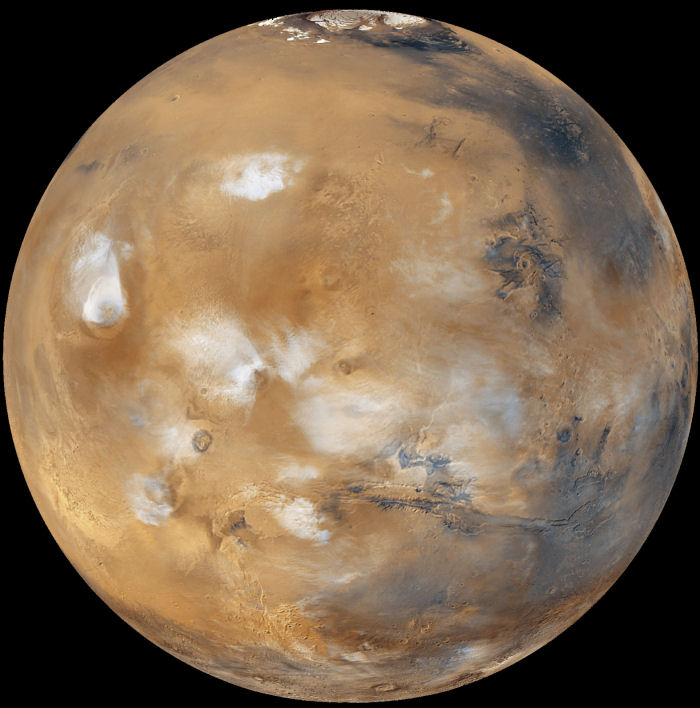
Like Earth, Mars is tilted on its axis (25.19 degrees), so that it has distinct seasons, and polar ice caps that change with the seasons. It also has a day that is almost exactly the same as Earth: 24.62 hours. Its year however, is twice as long, 687 days, and its gravity only about a third. If you weighed 100 pounds on Earth, you'd weigh 38 pounds on Mars.
Mars is a small planet, half the size of Earth, with a diameter of 4,242 miles (6,787 kms). It is right next door to us, its orbit only 36 million miles further from the Sun. Mars is the fourth planet out from the Sun, and the last of the four solid, rocky planets of the inner solar system. Beyond Mars lies the debris field of the asteroid belt, and beyond that, far out in the cold depths of the outer solar system, is where the mighty gas giants live.
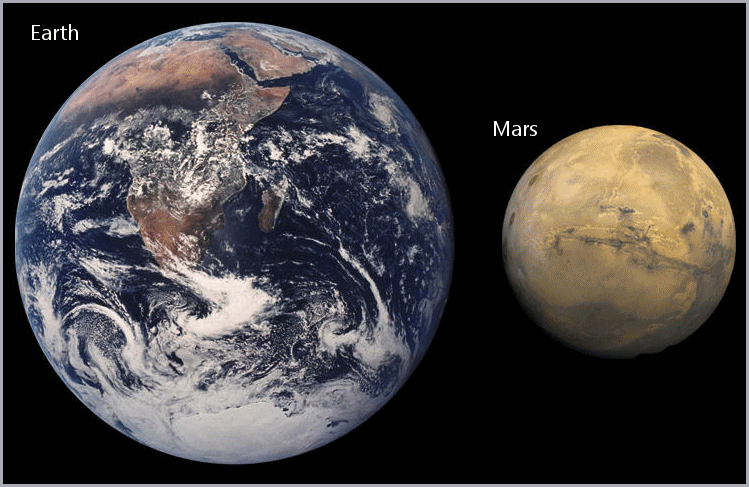
After our Moon, Mars is the next logical place for Humans to visit in person. Venus, our next door neighbor on the other side, is much too hostile, as is little Mercury right beside the Sun, and all the other planets and moons are much too cold, and alien, and far away. Mars itself, although considered close compared with most of the other planets, is still very far away. With present technology, a Human expedition to Mars would take over nine months to reach the red planet.
In the meantime we send unmanned spacecraft to Mars, and we've sent quite a few. Beginning in 1960, the old Soviet Union sent no less than seventeen, although only six actually completed the journey. NASA has had slightly better luck, only losing five Mars spacecraft over the years, and completing eleven successful missions. As a result Mars has become a busy place, with several spacecraft studying the planet from orbit, and robotic rovers exploring the surface.
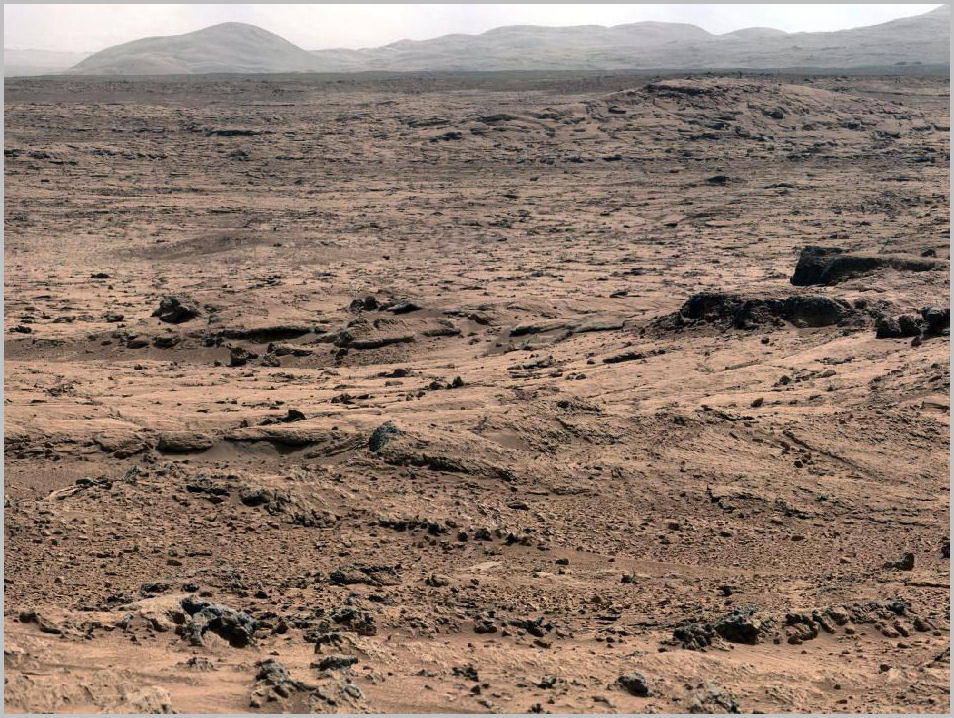
High on the slopes of an old volcano called Arsia Mons, scientists have discovered seven strangely circular holes that appear to lead deep into the interior of Mars. Dubbed the seven sisters, the holes emit temperatures significantly different than the surrounding terrain, causing scientists to believe they are openings - like skylights - into large subsurface caverns or caves. The photos below were taken by NASA's Mars Odyssey spacecraft in orbit around the red planet.
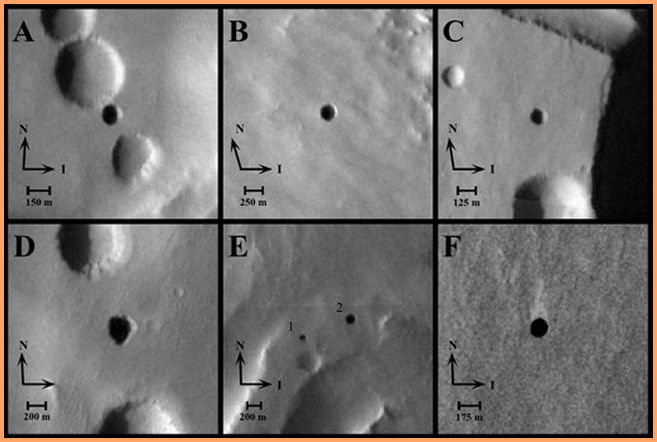
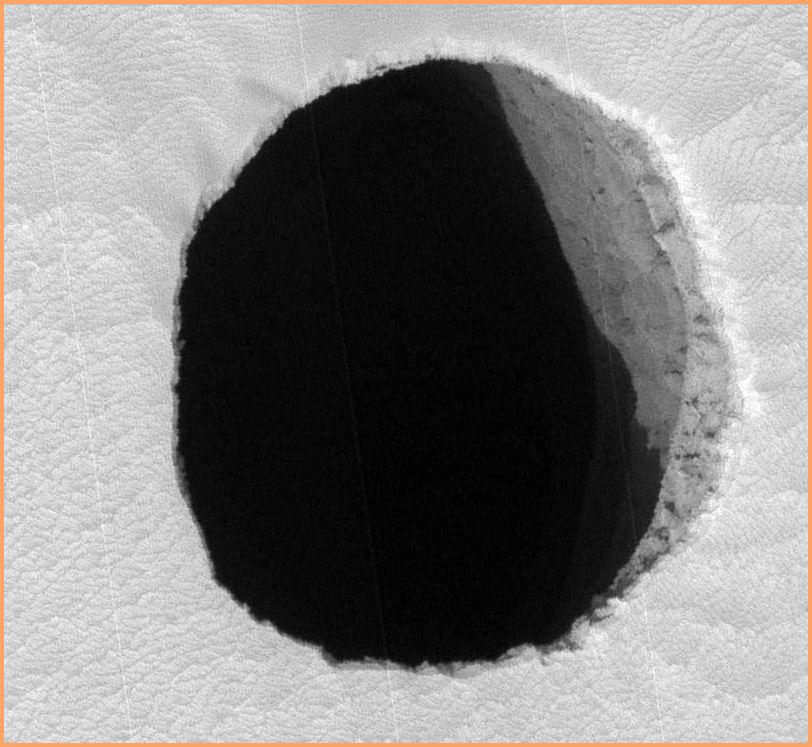
Speculation is running high as to the possibility of the protected, underground caves at the bottom of these holes being habitats for some form of Martian life. At the very least, they offer the potential to become habitats for the first Humans who will be visiting Mars in the near future. And Humans will be visiting Mars. We have no choice. Mars is the new, New World. It is the next step in the evolution of the Human species. In many ways the planet Mars is our final hope. Even if we learn how to take care of our own planet properly, and manage to curb pollution and global warming (and that is a very big if), Earth is a finite space, and sooner or later, we will run out of room. And with present population trends, it may be sooner rather than later.
And then there's the wild card: the possibility of finding life on Mars! That would change everything. If evidence of past or present life was discovered on Mars, we would know once and for all we are not alone in the Universe, and life on Earth would never be the same again.
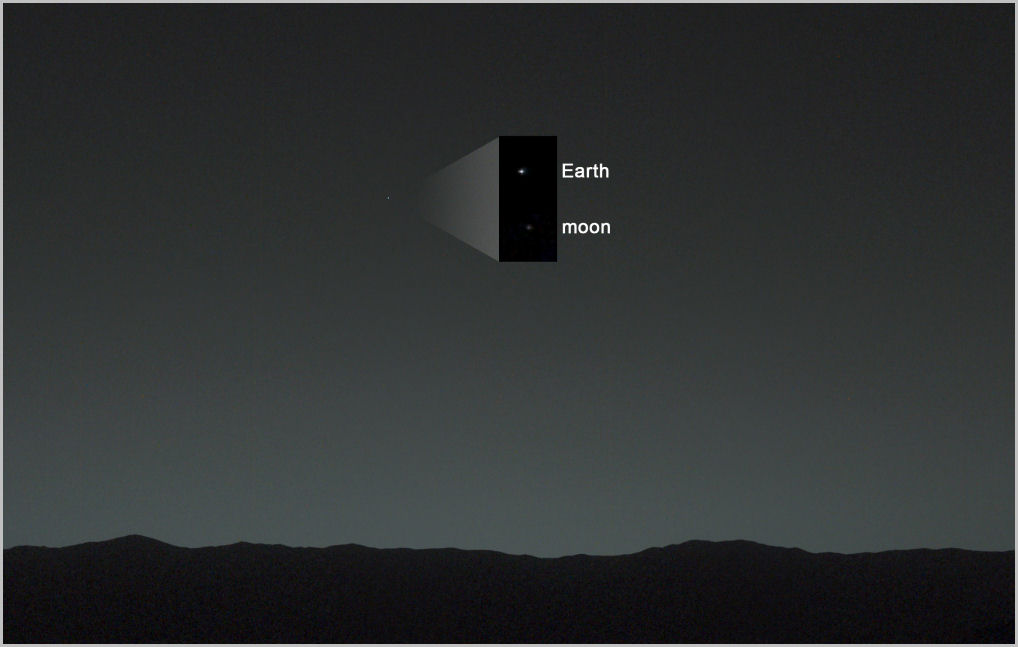
Mars has two small, irregular shaped moons, named after its mythological sons: Deimos (terror) and Phobos (fear). Most likely captured asteroids, Phobos and Deimos always keep the same face towards the red planet they orbit.
Phobos is the larger moon, with a diameter of 16 miles (27 kms), and orbits only 3,700 miles (6,000 kms) above the surface of Mars, making it the closest known moon in the solar system. Because of its close proximity, Phobos orbits Mars three times a day.
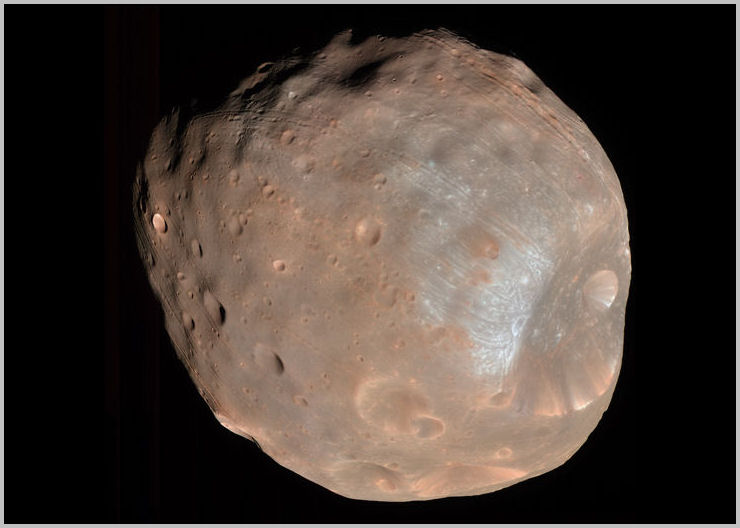
Deimos is the smaller moon, with a diameter of less than 4 miles (6 kms). It's much farther away then its larger brother, orbiting the red planet at a distance of 14,000 miles (23,000 kms), and taking 30 hours to complete one orbit.
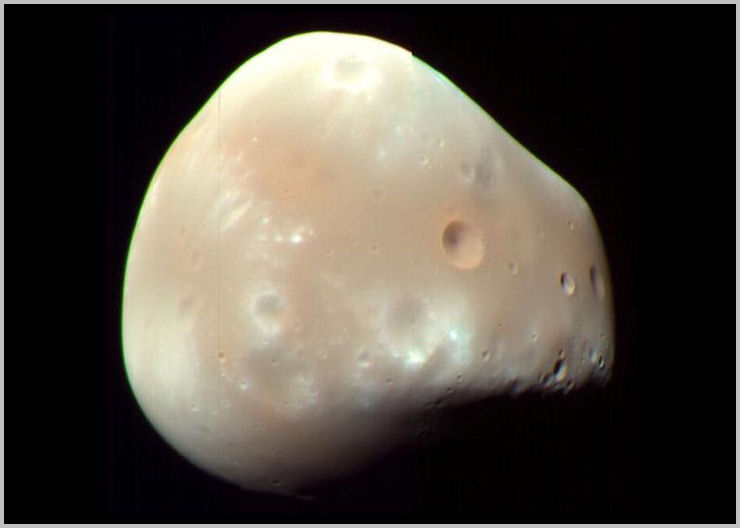
The importance of the planet Mars cannot be overstated, because some day humans will outgrow their home planet, and have to move elsewhere, and until we figure out some way to travel faster than the speed of light (good luck with that!), Mars is our only option. So take a good look at the Martian sunset below, captured by the robot Spirit, and think about future generations of humans that will be watching that sunset, from their new home on the planet Mars.
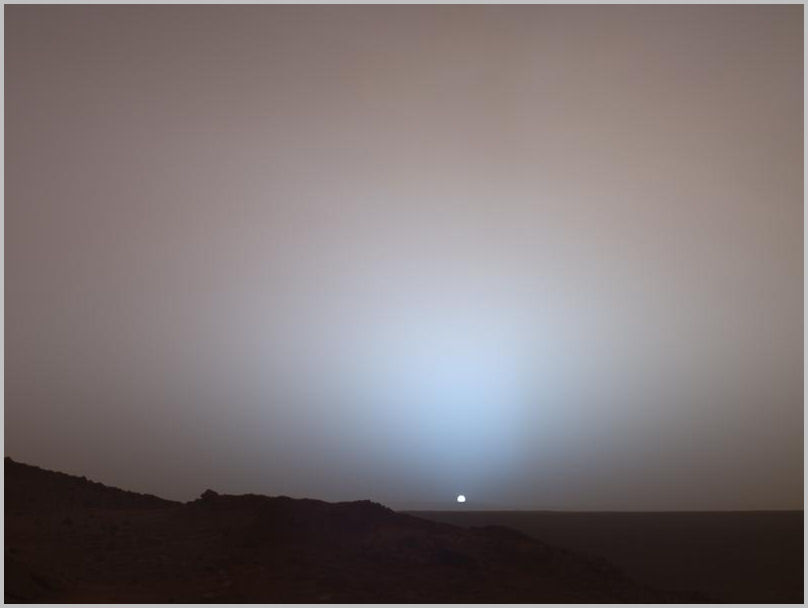
|
|
|
| SOL | MERCURY | VENUS | EARTH | METEORS | MOON | MARS | ASTEROIDS | JUPITER | SATURN | URANUS | NEPTUNE | PLUTO | COMETS |
|
|
|